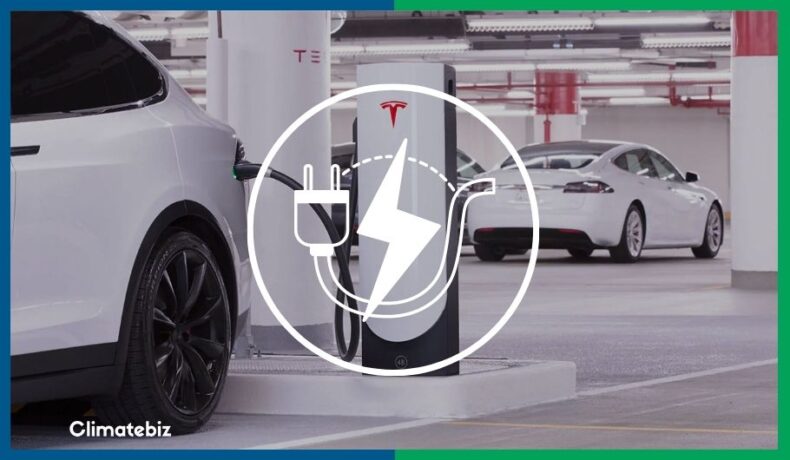Those of you looking to purchase a Tesla will be more than a little intrigued by how long it actually takes to charge a Tesla.
While that’s a very reasonable and simple question to ask, the answer is anything but straightforward.
As you probably know by now, Tesla is the world’s largest electric vehicle manufacturer. In 2021 alone, Tesla delivered over 911,000 units (Model 3 and Y) and has produced more than 1.91 million vehicles since 2009.
One of the reasons why Tesla is such a reference in the electric vehicles industry is that the company invests heavily in research and development of battery technologies, and for a good reason.
You can think of the battery as the heart of any electric vehicle. So the better the battery, the more autonomy, convenience, endurance, and range you’ll have. What’s more, the charging process can be much more efficient.
Charging a Tesla quickly becomes an integral part of a Tesla owner’s daily routine. Mainly to avoid ending up stranded with a dead battery.
And with that, knowing how long it takes to charge a Tesla becomes crucial, especially when it comes to making plans.
In this article, we’ll break down everything you need to know about the Tesla charging times. We’ll cover the types of Tesla chargers and answer some popular questions about charging a Tesla.
Keep reading to find out!
Table of Contents
How Long Does It Take To Charge A Tesla?
| Charger | Model S | Model 3 | Model X | Model Y |
|---|---|---|---|---|
| Mobile Connector NEMA 5-15 (Level 1) | 135 h | 119 h | 174 h | 110 h |
| Mobile Connector NEMA 5-20 (Level 1) | 101 h | 90 h | 116 h | 83 h |
| Mobile Connector NEMA 6-15 (Level 2) | 58 h | 33 h | 70 h | 33 h |
| Mobile Connector NEMA 6-20 (Level 2) | 37 h | 24 h | 44 h | 24 h |
| Mobile Connector NEMA 10 – 30 and 14 – 30 (Level 2) | 24 h | 16 h | 25 h | 16 h |
| Mobile Connector NEMA 14 – 50 and 6 – 50 (Level 2) | 18 h | 12 h | 17 h | 11 h |
| Wall Connector | 9.2 h | 8.1 h | 7.9 h | 7.5 h |
| Supercharger (to charge from 20% to 70% = 50% of total range) | 30 minutes | 30 minutes | 30 minutes | 30 minutes |
Even though we gave you the answers above, answering this question isn’t as simple a task as it may seem. Why? Because many factors influence the charging time of a Tesla, such as:
- Size of Battery (according to your Tesla model)
- How full/depleted the battery currently is
- Ambient and Battery Temperature
- Type of Charger or Charging Station
- Charging Specs
With so many things to consider, the time to charge a Tesla can range anywhere from 10 minutes to 5 days.
Let’s discuss some of these factors in detail.
Battery Size (For Each Tesla Model)
Tesla currently offers four models:
- Model S (and version Model S Plaid)
- Model 3 (versions: Long Range, Performance, and Standard Range Plus)
- Model X (and version Model X Plaid)
- Model Y (versions: Performance and Long Range)
Each model has a different battery size (rated by range) which is the estimated distance your Tesla can travel on a single charge.
We’ve prepared a table compiling the range ratings of each model, according to Tesla’s website. (Usable range is the range you can actually use in one charge, which is between 20% and 90%, as recommended by Tesla)
| Model and Version | Total Range (EPA est.) | Usable Range (20% to 90% SoC) |
|---|---|---|
| Model S | 405 mi / 652 km | 284 mi / 456 km |
| Model S Plaid | 396 mi / 637 km | 277 mi / 446 km |
| Model 3 Performance | 315 mi / 507 km | 221 mi / 355 km |
| Model 3 Long Range AWD | 358 mi / 576 km | 251 mi / 403 km |
| Model 3 Standard Range Plus | 272 mi / 438 km | 190 mi / 306 km |
| Model X | 348 mi / 560 km | 244 mi / 392 km |
| Model X Plaid | 333 mi / 536 km | 233 mi / 375 km |
| Model Y Performance | 303 mi / 488 km | 212 mi / 341 km |
| Model Y Long Range | 330 mi / 531 km | 231 mi / 372 km |
“Ok, but why is this important?”
Here’s the missing piece of information: Tesla chargers can be rated by “miles of range added per hour of charging.”
Therefore, once you know a Tesla’s battery capacity (in miles of range) and how much range a charger provides per hour of charging, you can estimate how long it takes to charge a Tesla.
Example: Estimating How Much Time It Takes To Charge A Tesla
For instance, let’s consider the Model S. The battery in this model can store enough energy for 405 miles of range.
If you use a Wall Connector that provides 44 miles of range per hour of charging, it will take about 9 hours and 12 minutes to charge this battery, from 0% to 100% SoC:
Estimated Charging Time (h) = Battery Capacity (mi) / Charger Capacity (mi/h)
Estimated Charging Time (h) = 405 mi / 44 mi/h = 9,2 hours
Battery’s Current State Of Charge
When charging a large battery (like a Tesla battery with a high capacity), you’ll notice that the charging rate is not constant throughout the charging process.
The charging rate varies due to battery charge level (SoC), frequent use of fast charging methods, and extreme climate conditions.
In fact, Tesla states on their website that “your vehicle charges faster when the battery is at a lower state of charge; charging slows down as the battery fills up.”
In other words, charging from 85% to 100% SoC can take almost the same time as charging from 10% to 85% SoC due to increased internal resistance (since the battery is almost full).
But that’s not something to worry about so much.
For regular use, Tesla recommends keeping the vehicle within the ‘daily’ range bracket, up to approximately 90% SoC. Tesla also advises charging up to 100% only when preparing for a longer trip.
This way, you’ll avoid the varying charging rate issue.
Tesla’s Battery Temperature
When it comes to charging batteries, internal and external temperature can significantly impact charging rate (therefore, charging time), current capacity, and overall battery performance.
Well, the same goes for Tesla batteries.
Although Tesla vehicles can precondition the battery’s temperature to allow for a faster charging process, the temperature will inevitably impact charging speed.
Tesla electric vehicles function optimally within a temperature range between 60ºF (~16°C) and 80ºF (~27°C).
Here’s a graph showing how the temperature impacts the charging time:
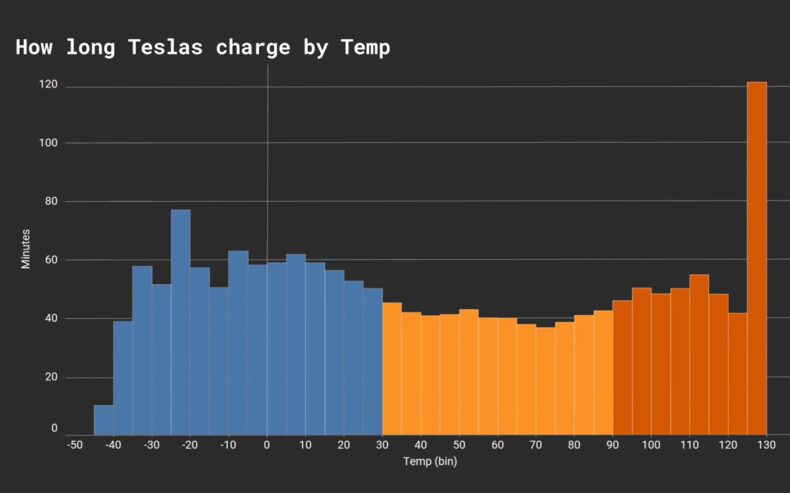
Source: tezlabapp
Notice that, between 65ºF (~18ºC) and 80ºF (~27ºC), charging takes less than 40 minutes with the supercharging method. Meanwhile, it takes over an hour to charge a Tesla at around 10ºF (-12ºC).
Now that we’ve seen how the battery capacity, the current state of charge, and the charging temperature affect charging time, it’s time to understand how the different chargers affect charging time.
Types Of Tesla Chargers
There are essentially three categories of chargers:
- Level 1: 120V
- Level 2: 240V
- DC fast charger: Tesla’s Supercharger (480V)
Levels 1 and 2 are home charging methods, while Tesla superchargers are “on the road” solutions located at public stations.
Home Charging
Tesla offers a few different ways for you to charge your Tesla at home:
- Mobile Connector with different NEMA adapter options
- Corded Mobile Connector
- Wall Connector
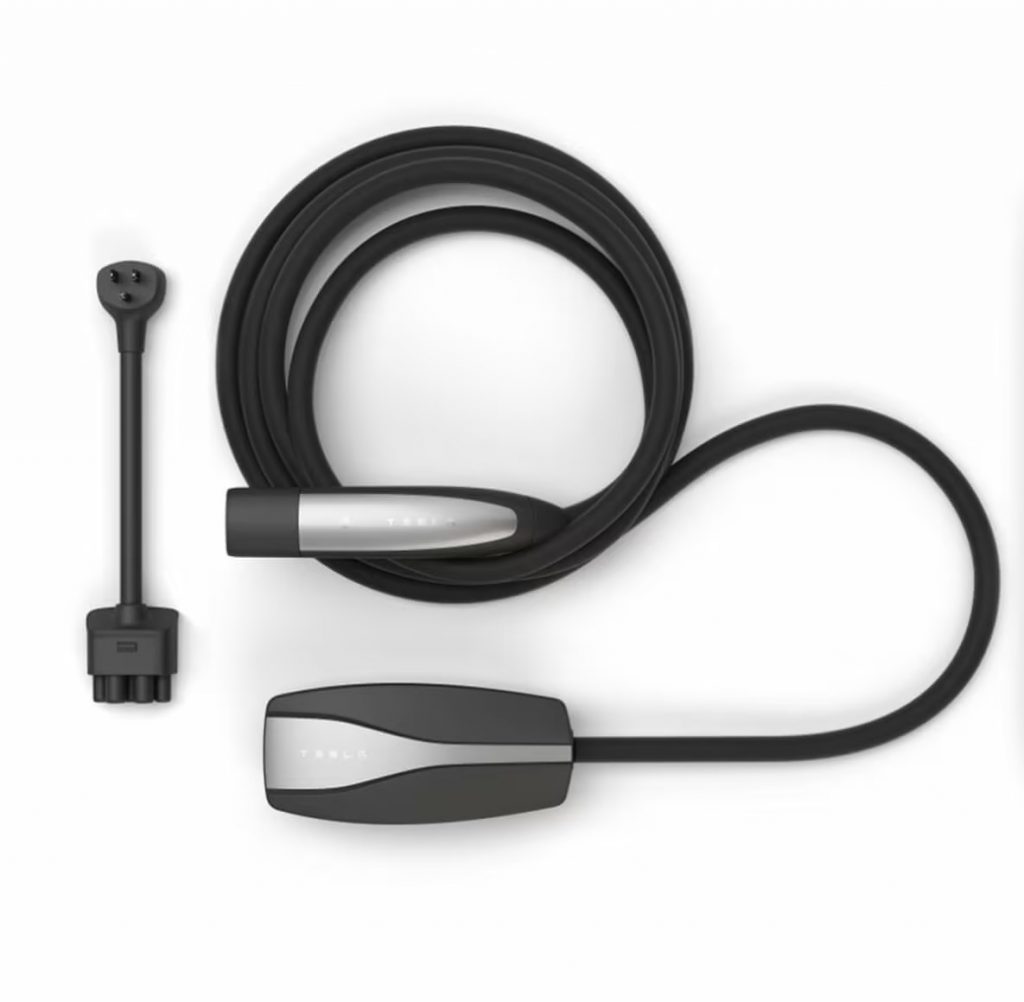
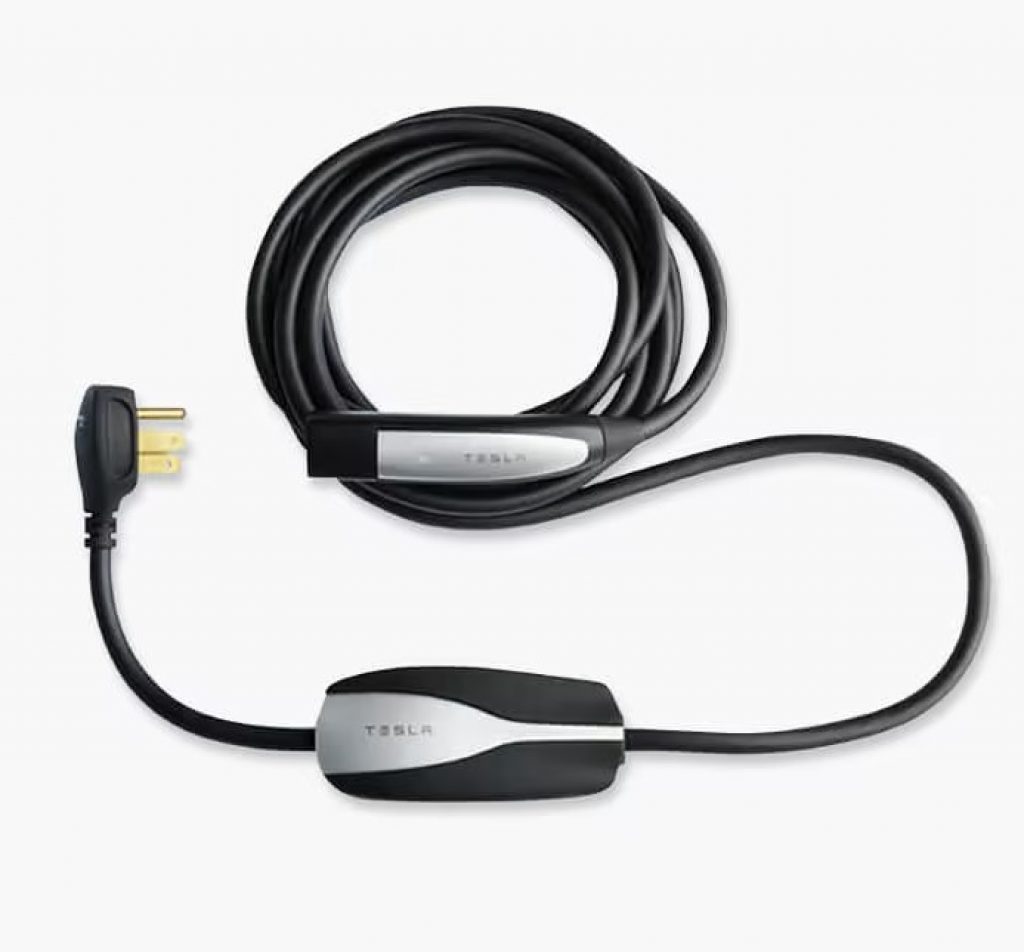
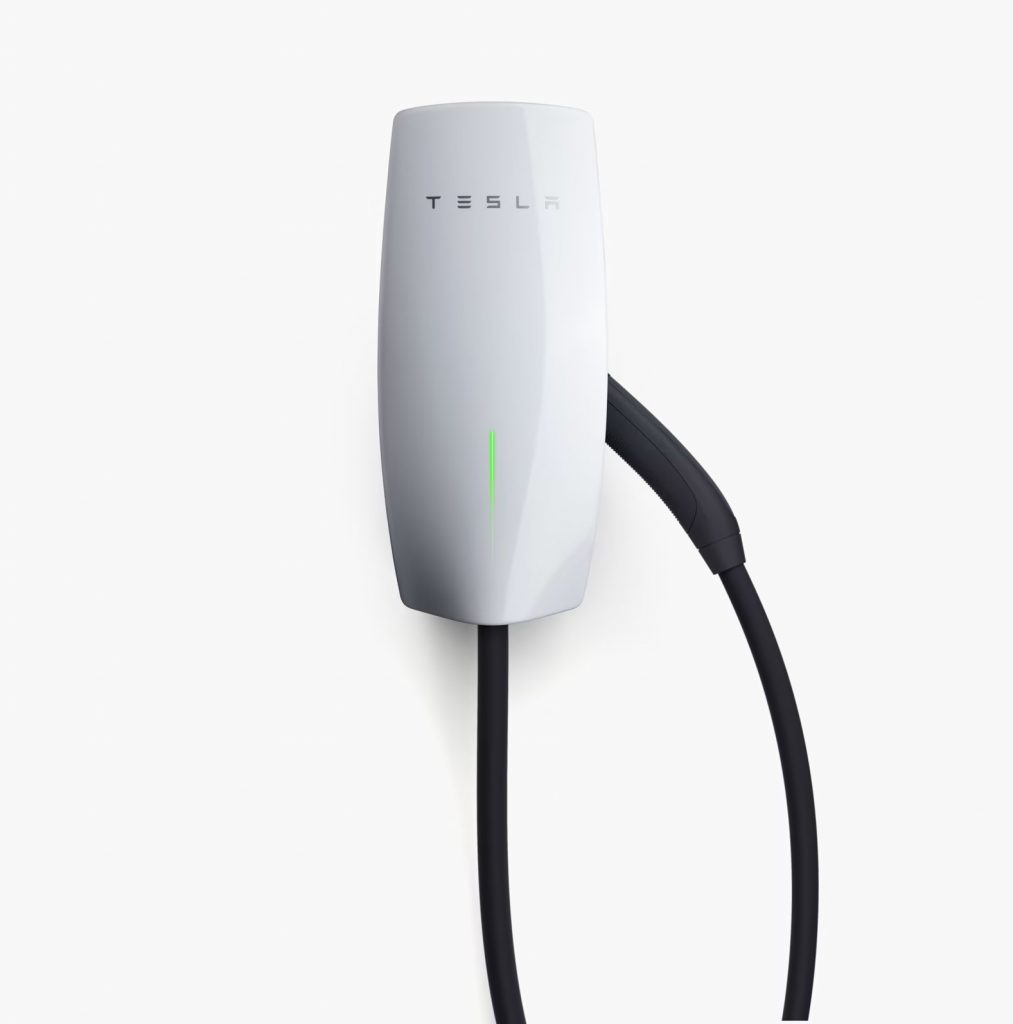
Each charger can deliver different charging specifications that will determine how much time it takes to charge a Tesla.
Let’s have a look at these charging specs.
Tesla Chargers: Charging Specs
Charging specs include voltage and current.
Voltage
Power is the product of voltage and amperage/current, so it’s easy to understand why a charger that delivers 12A and 240V is more powerful than a charger that delivers 12A and 120V:
Power (W) = voltage (V) x current (A)
Power (W) = 240V x 12A = 2880W = 2,88 kW
Power (W) = 120V x 12A = 1440W = 1,44 kW
If we consider that 1 kW = 4 mi/hour of charging, then the 240V 12A charger would charge at a rate of 11,5 mi/h while the 120V 12A charger would charge at a rate of 5,7 mi/h.
Therefore, a level 2 charger charges faster than a level 1 charger because it delivers 240V (instead of 120V).
Amperage
What about amperage? How many amps can these chargers deliver? Well, that depends on your house’s electric system.
The standard 120V wall outlet (NEMA 5 – 15) connects to a 15A breaker, but the usable amount of current is only 80%. Therefore, you can pull up to 12A from this outlet. If you try to pull more amps than that, the breaker will trip.
Some houses have electric panels that contain different breakers, allowing for various wall outlets, such as NEMA 5 – 20 (120V 20A), NEMA 14-30 (240V 30A), and NEMA 14 – 50 (240V 50A) outlets.
The same goes for Tesla chargers. Several different NEMA adapters exist; you just have to figure out which one is right for you, according to your house’s available outlets.
And remember power = voltage x amperage? With this information, you can understand why the greater the amperage delivered, the shorter the charging time.
NEMA Adapters
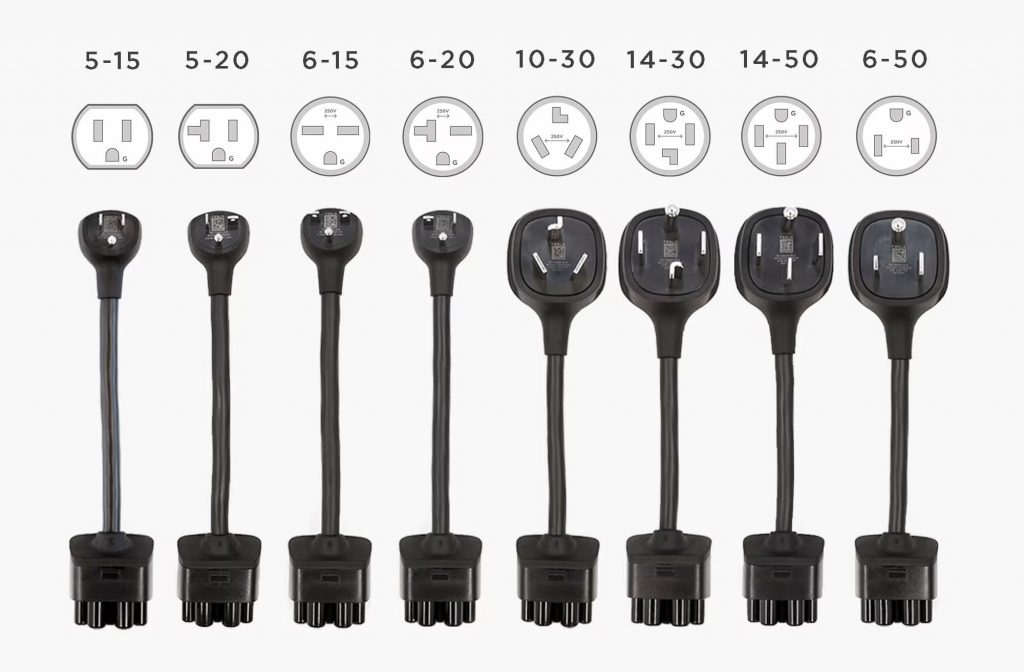
Source: shop.tesla.com
To make things much easier for you, we’ve prepared a table containing the maximum power output and the estimated mileage gained per hour of charge by each Tesla model:
Table: Charging Method/Adapter x Charging Rates For Each Tesla Model
| Adapter | Max. Power output | Model S mi/h gained | Model 3 mi/h gained | Model X mi/h gained | Model Y mi/h gained |
|---|---|---|---|---|---|
| 5 – 15 | 120V x 12A = 1,44kW | 3 mi 4.8 km | 3 mi 4.8 km | 2 mi 3.2 km | 3 mi 4.8 km |
| 5 – 20 | 120V x 16A = 1,92kW | 4 mi 6.4 km | 4 mi 6.4 km | 3 mi 4.8 km | 4 mi 6.4 km |
| 6 – 15 | 240V x 12A = 2,88 kW | 7 mi 11.2 km | 11 mi 17.7 km | 5 mi 8.0 km | 10 mi 16.1 km |
| 6 – 20 | 240V x 16A = 3,84 kW | 11 mi 17.7 km | 15 mi 24.1 km | 8 mi 12.9 km | 14 mi 22.5 km |
| 10 – 30 and 14 – 30 | 240V x 24A = 5,76 kW | 17 mi 27.4 km | 22 mi 35.4 km | 14 mi 22.5 km | 21 mi 33.8 km |
| 14 – 50 and 6 – 50 | 240V x 40A = 9,60 kW | 23 mi 37.0 km | 30 mi 48.2 km | 20 mi 32.2 km | 29 mi 46.7 km |
| Wall Connector | 240V x 48V = 11,52 kW | Up to 34 mi or 54.7 km | Up to 44 mi or 70.8 km | Up to 30 mi or 48.3 km | Up to 43 mi or 69.2 km |
Why is this table relevant? Well, knowing how many miles are gained per hour of charging allows us to estimate the charging time using the following formula:
Estimated Charging Time (h) = Battery Capacity (mi) / Charger Capacity (mi/h)
Later in this article, we provide a table showing the estimated time to charge a Tesla according to the charger used (for each Tesla Model).
Wall Connector
Another option Tesla offers is the Wall Connector. You don’t have to plug it into a wall outlet; the wall connector is hardwired (connected directly to your house’s electric panel).
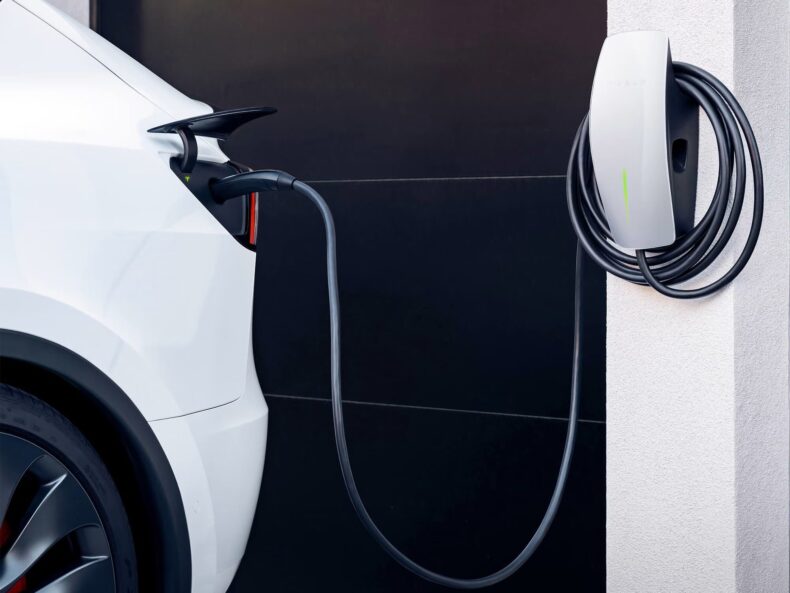
Source: shop.tesla.com
And although the price is a bit steep ($400, plus installation), it looks pretty cool in your garage.
But looks aren’t the only thing the wall connector offers; it also provides faster charging since it’s rated at 60A continuous current (usable is 80%, so 48A max), adding up to 44 miles per hour of charge into your Tesla.
DC Supercharger: Shortest Time To Charge A Tesla
Besides the home charging options, Tesla offers a robust fast-charging network, providing over 30,000 superchargers throughout several countries.
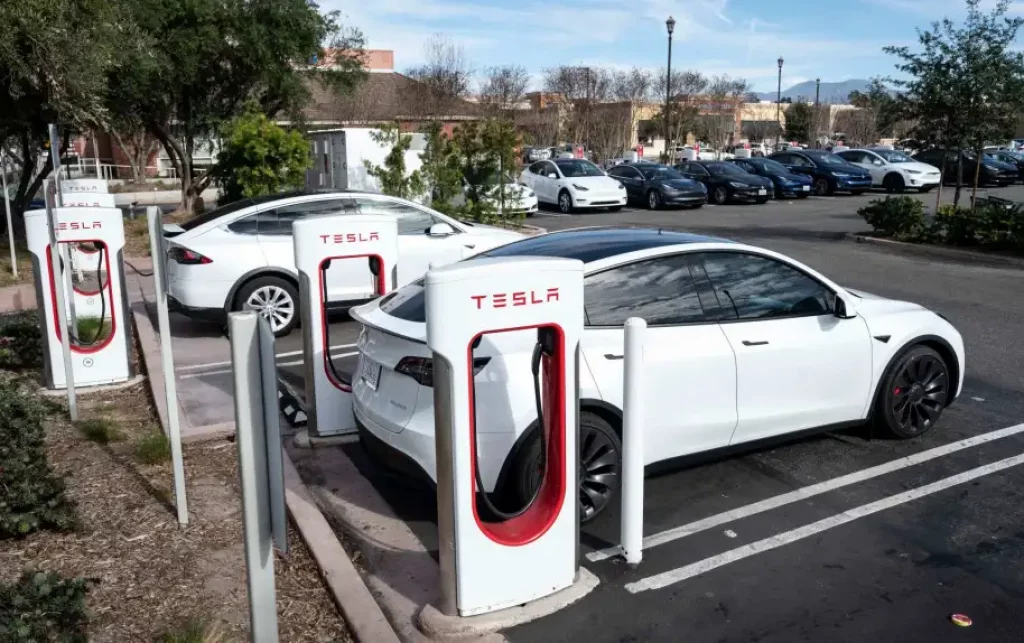
Source: dailybreeze.com
These Superchargers use direct current to charge the battery directly (the power doesn’t have to go through the internal charger that converts AC to DC). For this reason, it can charge at a higher voltage (around 480V).
Tesla claims this charger can deliver up to 250 kW of power; this translates to a certain amount of mileage gained per charging time (15 minutes):
| Tesla Model | Mileage Gained in 15 minutes of Supercharging |
|---|---|
| Model S | Up to 200 miles in 15 minutes |
| Model 3 | Up to 175 miles in 15 minutes |
| Model X | Up to 175 miles in 15 minutes |
| Model Y | Up to 162 miles in 15 minutes |
Estimated Time To Charge A Tesla
Okay, so you have all the information you need to estimate the amount of time it takes to charge a Tesla:
- You know the battery capacity (and the usable capacity) of each Tesla model (in miles of range);
- The charging capacity of each Tesla charger (in miles per hour of charging);
- And how to estimate the amount of time it takes to charge a Tesla, which is Estimated Charging Time (h) = Battery Capacity (mi) / Charger Capacity (mi/h).
Now all you need to do to estimate the charging time is punch in the numbers. But don’t worry, we did this for you.
Below is a table containing the charging times for each Tesla Model, according to each charger’s capacity:
Table: Tesla Charging Times According To Charger And Battery Capacity
| Charger | Model S | Model 3 | Model X | Model Y |
|---|---|---|---|---|
| Mobile Connector NEMA 5-15 (Level 1) | 135 h | 119 h | 174 h | 110 h |
| Mobile Connector NEMA 5-20 (Level 1) | 101 h | 90 h | 116 h | 83 h |
| Mobile Connector NEMA 6-15 (Level 2) | 58 h | 33 h | 70 h | 33 h |
| Mobile Connector NEMA 6-20 (Level 2) | 37 h | 24 h | 44 h | 24 h |
| Mobile Connector NEMA 10 – 30 and 14 – 30 (Level 2) | 24 h | 16 h | 25 h | 16 h |
| Mobile Connector NEMA 14 – 50 and 6 – 50 (Level 2) | 18 h | 12 h | 17 h | 11 h |
| Wall Connector | 9.2 h | 8.1 h | 7.9 h | 7.5 h |
| Supercharger (to charge from 20% to 70% = 50% of total range) | 30 minutes | 30 minutes | 30 minutes | 30 minutes |
Important Considerations
It’s important to point out that the table shows rough estimations and that charging times vary due to several factors.
Note that, for level 1 charging methods, charging times are over 100 hours. Don’t be alarmed by these numbers. They represent the estimated time it would take to charge the Tesla from 0% to 100%.
In real-life conditions, you would never charge your Tesla from 0% to 100% because you wouldn’t completely deplete the battery.
Americans drive, on average, 30 miles per day. So just leaving your Tesla plugged in overnight should be enough to provide this 30 miles back and leave you with a full battery the following day.
However, if you drive more than the daily average, you should look into more powerful charging options, such as the NEMA 14 – 50 outlet or the Tesla wall connector.
Tesla recommends the following charging practices to maximize your Tesla’s range:
- Maintain a regular, everyday charging routine using a low-voltage charger (i.e., Wall Connector at your home). Avoid allowing the battery to get too low in charge.
- Only use DC Fast Charging (i.e., Supercharging) when necessary, such as during long road trips.
Do Teslas Charge Quicker Than Other Electric Cars?
If you compare apples to apples, yes — the majority of electric cars, at least.
What do we mean by that? Well, for instance, you can’t compare the charging time of a Tesla Model S with 405 miles of range with the charging time of a Mini Cooper Electric with 114 miles of range.
If you did, you’d think that charging a Mini Cooper Electric is just as fast as charging a Tesla Model S since you can charge the former to 80% in only 35 minutes using fast-charging methods.
However, that’s not an accurate comparison because the total range of a Mini Cooper Electric is almost a fourth of the total range of a Tesla Model S.
Therefore, to effectively compare EVs charging times to Teslas, both vehicles need to share a similar range (between 300 and 400 miles).
EVs With A Range Rating Similar To A Tesla’s
There are many EVs that fall within the Tesla range, including:
- Mercedes EQS450+: 350 miles of range
- BMW iX xDrive50: 324 Miles
- Ford F-150 Lightning Extended Range: 320 Miles
- Rivian R1T: 314 Miles
- Ford Mustang Mach-E California Route 1 RWD: 305 Miles
- Hyundai Ioniq 5 RWD: 303 Miles
Although these models allow for fast charging — some of them charge almost as fast as a Tesla — the Tesla models can accept a higher amount of power (in kW) over a sustained period and, therefore, have shorter charging times.
Another feather in the cap of Tesla is that they own and operate the most extensive global, fast-charging network in the world; this allows Tesla cars to be fast-charged more often.
However, there are a few exceptions.
Fastest-Charging Electric Vehicles
There are a few EVs that can charge faster than a Tesla.
After Tesla set the record for the shortest cumulative charging time on a trip from Los Angeles to New York City (with nearly 13h of plugging in), Kia claimed that record.
The KIA EV6 electric hatchback beat the Tesla record with a cumulative charging time of just over 7 hours for the same route.
After KIA, it was time for the Porsche Taycan to claim the record, with an unbelievable 2,5 hours of cumulative charging for the LA to NY route.
Lastly, you’ve probably heard about Lucid Air by now.
Lucid Motors claims that their new EV, Lucid Air (520 miles of EPA range), can charge up to 300 miles in 20 minutes.
That’s faster than the fastest charging Tesla, the Model S, which can charge up to 200 miles in 15 minutes (so 267 miles in 20 minutes).
Are There Ways To Charge A Tesla Faster?
Yes, that is within the realm of charging possibilities.
For example, you can use a wall connector instead of a level 1 charger. Or a supercharger instead of a wall connector.
But if you’re looking for an option faster than the Tesla supercharger, you’re out of luck unless you want to fry your car’s battery or potentially set it on fire.
The Tesla Supercharger provides the maximum power a Tesla battery can safely accept: up to 250 kWh.
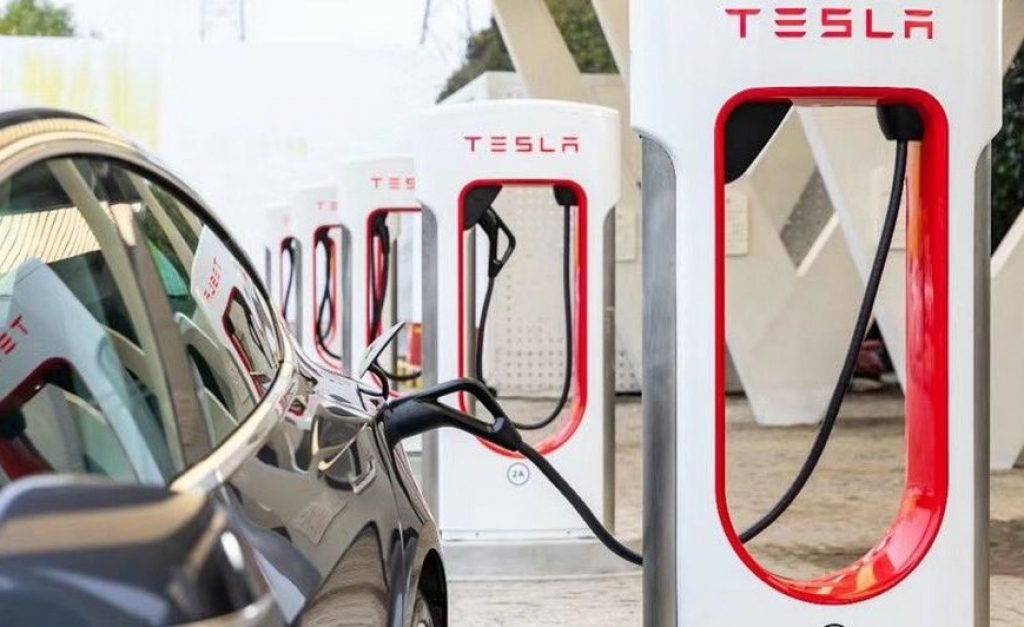
There are, however, charging practices that can make charging more efficient:
- For cold weather: precondition the battery.
Tesla vehicles raise the battery’s temperature to an appropriate temperature before charging to prepare the battery for optimal charging. - You can adjust the charging current (if the vehicle allows it) when charging to maximize charging speed.
- To reduce charging times, you can set the charging parameters (min and max SoC, according to your daily use).
Final Thoughts
Time is a critical factor when charging a Tesla.
Depending on the charger you use, it can take anywhere from 30 minutes to 12 hours to charge your Tesla.
If you’re using a Level 2 charger, the most common type, it’ll take about 4-6 hours to top off (charge until 90%, from a medium SoC) your car’s battery.
However, if you’re using a Level 1 charger, it can take much longer just to recharge what you spent in an average day of driving — about 12 hours.
That’s why it’s essential to be aware of the time it takes to charge a Tesla before you begin the process. Otherwise, you may end up being stranded with a dead battery.

